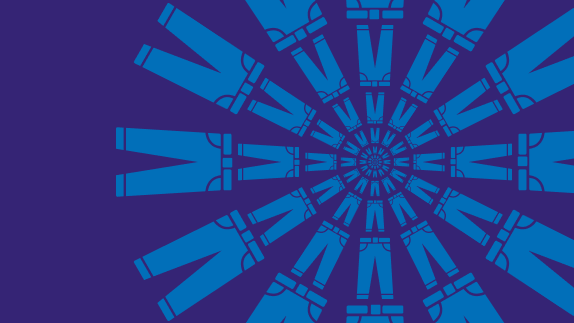I first experienced fashion-envy aged three; oh, how I coveted my cousin’s 80s straight-leg jeans, embroidered around the pocket with the Ghostbusters logo.
In my teens, weekend jobs led to my discovery of the British high-street: sandblasted heavyweights, pale blue stone-bleached staples, late-90s skousers and Y2K patchwork. The story continues through Sienna Miller skinnies, battles with boyfriend fits, and a slow descent into ‘mom jeans’. My mother can trace the same journey with flower-powered flares and Princess Diana denim. I have a great photo of my grandmother modelling capri-style crops in the late fifties.
Jeans are iconic. As a single garment, they are intimately attached to our sense of style and self. As such, their emotional value becomes part of what makes them durable through the decades. But the way we make jeans today causes waste and pollution and contributes to climate change and biodiversity loss. A pair of jeans doesn’t just hold the memories we make while wearing them but the embodied emissions of the materials, components, and energy used to bring them to market.
The current fashion system is broken – but fixable

Jeans are symbolic of a wider problem. In our current linear fashion system, resources are extracted to make garments that are used for a very short amount of time and, ultimately, thrown away. Not only are many of the fibres, substances, and processes used to make jeans harmful to the environment and human health, the way that jeans are designed and constructed makes them difficult to remake and recyclerecycleTransform a product or component into its basic materials or substances and reprocessing them into new materials. after they have been used. Too often, in today’s system, jeans are designed to flatter, fit, and sell – not to last.
But it can be different. In a circular economycircular economyA systems solution framework that tackles global challenges like climate change, biodiversity loss, waste, and pollution. It is based on three principles, driven by design: eliminate waste and pollution, circulate products and materials (at their highest value), and regenerate nature. for fashion, jeans are designed to be used more, made to be made again, and made from safe and recycled or renewable inputs. Participants of The Ellen MacArthur Foundation’s Jeans Redesign Project – brands and retailers, garment manufacturers, and fabric mills – have already proven that change is possible; by rethinking the composition of the whole garment to imagining new alternatives to threads, zippers, rivets, and other fastenings. Many are moving away from a medley of man-made synthetic fibres (which can be hazardous, polluting, and difficult to recycle) towards the inclusion of recycled materials and, beyond that, cellulose-based, organically grown, or regeneratively produced fibres with nature-positive outcomes. However, scaling this progress will involve more than just sustainable sourcing or narrow product-focused actions. Transforming the entire fashion system will mean changing how the industry thinks about everything from supply-chain logistics to new service-based business models such as rental, resale, repairrepairOperation by which a faulty or broken product or component is returned back to a usable state to fulfil its intended use., and remaking that will not only deliver garments but keep them in use.
Jeans that deliver more memories, to more users, for longer

In a circular economy for fashion, both physical and emotional durabilitydurabilityThe ability of a product, component or material to remain functional and relevant when used as intended. are essential. While the former can be measured in material terms – technical measures like tear and tensile strength, dimensional stability, and abrasion resistance – the latter is less quantifiable. As well as withstanding multiple physical wears and washes, jeans should be able to retain their aesthetic and emotional desirability to their user, or multiple users, over time. After being worn through as many everyday moments and meaningful events as possible, they need to have plenty of life left to allow others to embed new experiences in their fibres.
Redesigning jeans is just the start. The days of clothes that contribute to climate change or fashion memories built on biodiversity loss must end. By working together to surface innovations and overcome challenges, businesses in the fashion industry can ensure that both the memories and the material value of jeans are retained for generations to come.
Learn more about our vision of a circular economy for fashion which helps tackle the root causes of global challenges such as climate change, biodiversity loss, and pollution.







